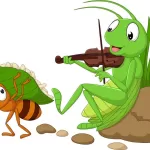As the sun goes down and the world becomes calm, a new set of animals comes to life – the nocturnal ones. Teaching your kids about these amazing creatures can be a fun adventure full of questions and discoveries. In this article let us dive into knowing what makes animals nocturnal, and their examples, and talk about easy ways to help your kids learn about them.
Nocturnal Animals – Definition
Nocturnal animals are those that are awake at night and rest during the day. You might ask, “How do they manage in the dark?” The answer is straightforward. Nocturnal animals have better senses of smell, hearing, and sight. This ability helps them survive. To thrive in their environment, they need to be well-adapted.
Teaching your child about the special traits of night animals can spark their curiosity and appreciation for nature. To make it easier for your kids to grasp the concept, let’s look at some examples of nocturnal animals.
Nocturnal Animals List
1. Owl
This bird certainly merits being at the top of the list of Nocturnal Animals Examples. Cool Fact: Did you know that the large eyes that owls have are the result of their evolution over the years, to become successful night hunters?
2. edgehogs
These ‘spiny’ creatures are native to the regions of Europe, Asia and Africa. Cool Fact: Hedgehogs find their favourite ‘berries’, thanks to their ‘long snout’, that helps them forage more easily.
3. Bats
These mysterious creatures that come out at night, are both a source of mystery and fear for little kids. Cool Fact: If you didn’t know already, bats sleep hanging ‘upside down’!
4. Foxes
The term ‘sly fox’ is best attributed to human beings, not these nocturnal creatures themselves. Cool Fact: It is their incredible sense of hearing, that helps them find their prey.
5. Mice
The singular term for this species of Nocturnal Animals is ‘Mouse.’ Again, a creature we know all too well. One that instils plenty of fear in us human beings, even though we are many times its size! Cool Fact: Did you know that the whiskers of a mouse are used to detect changes in the temperature?
6. Leopard
This majestic wild cat stands out from all the other ‘Big Cats’, on account of its beautiful camouflage. Cool Fact: It’s this very ‘camouflage that helps them go unnoticed during the day, as they sleep in caves.
7. Raccoons
Raccoons, known for their cleverness and adaptability, are active foragers during the night.
With a keen sense of touch, these nocturnal creatures navigate their surroundings to find food, making them resourceful survivors in various environments.
8. Coyotes
Coyotes are skilled hunters and scavengers, showcasing adaptability to thrive in diverse environments. These creatures often form family groups, and their distinctive howls serve as a means of communication within their social structures, contributing to their survival in the wild.
Also Read – List of animals live on land and water
Understanding Nocturnal Animals
Let us now take a closer look at this nocturnal behaviour of animals. Nocturnal animals have special features that help them thrive in the dark. These features set them apart from animals that are active during the day and include sharper senses, unique eyesight, and special behaviours.
For example, owls have large eyes that help them see in low light and their facial discs direct sounds to their ears for better hearing. Bats use high-pitched sounds that bounce off objects, helping them find their way and catch food through echolocation. Learning about these unique traits can make exploring nocturnal animals fun and exciting for your kids.
Nocturnal Animals – Activities for Kids
The list of Nocturnal Animals above provides a good overview, but it is not complete. Here are some fun activities to help kids learn more about these amazing night creatures.
1. Using Flashcards
Show your child pictures of different Nocturnal animals on flashcards, and ask them to call out their names.
2. Guess the Sound
Play the sounds of different Nocturnal Animals to them. Then, play an individual sound and ask them which Nocturnal Animal is behind that sound!
3. The ‘What Animal…’ Game
Talk to your child about the characteristics of the different Nocturnal Animals. Then, ask them a question like ‘What Nocturnal Animal sleeps upside down?’, and see if they can answer it correctly.
4. Colour the Nocturnal Animals
On a printout of a mix of both Nocturnal and Diurnal Animals, children must colour ‘Only the Nocturnal Animals.’
5. The Alphabet Game
They have to name a Nocturnal Animal using each letter of the Alphabet, starting from A. Example: A for African Elephant, B for Bat, etc.
6. Nocturnal Animal Crafts
Engage your children in enjoyable and educational activities by crafting nocturnal animals. From crafting owl masks to creating bat finger puppets or firefly lanterns, these hands-on experiences not only enhance their understanding but also provide a creative outlet for self-expression. The tactile engagement reinforces learning in a fun and memorable way.
7. Storytelling Sessions
Elevate bedtime routines by introducing stories featuring nocturnal animals. Highlighting the unique behaviours and characteristics of these creatures, the tales become a delightful blend of education and entertainment. Encourage your children to ask questions and express curiosity, fostering an interactive and engaging learning environment.
Conclusion
Teaching your kids about nocturnal animals opens a door to the mysteries of the night. By introducing them to the concept, providing an animal list of examples, understanding what makes these creatures nocturnal, learning their names, and implementing creative teaching strategies, you can create for your kids, an interactive and informative experience for them.
EuroKids focuses on providing a rich educational experience for young children, emphasising a strong bond with nature. Activities such as making owl masks, going on stargazing trips, and engaging in storytelling help create an exciting learning space. Here, children learn about the special habits of nocturnal animals and gain a true appreciation for the beauty of the night.
















